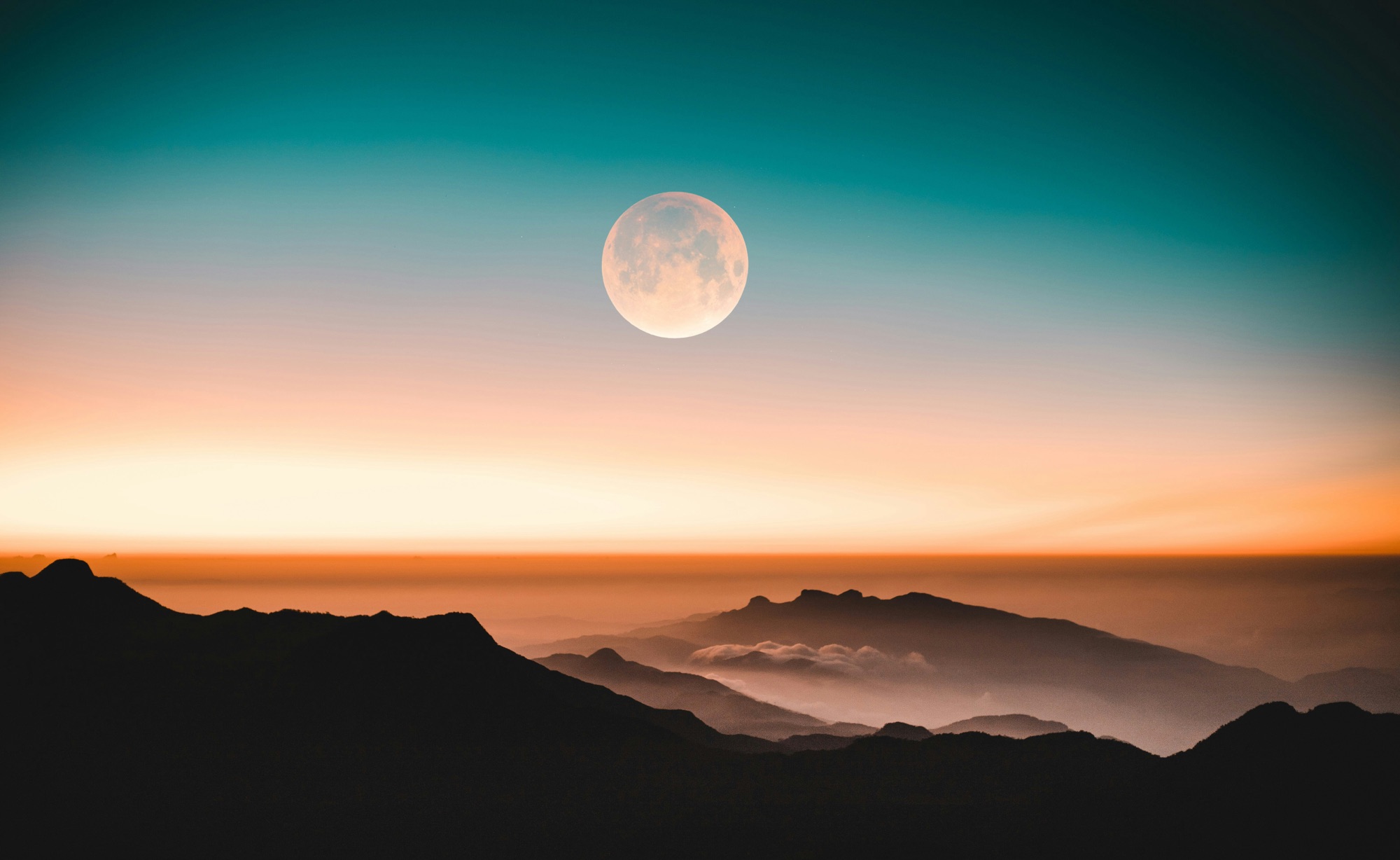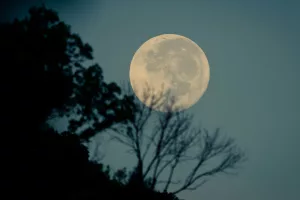The relationship between planets and their moons is a fascinating dance choreographed by the laws of physics and gravity. It’s a cosmic interplay where gravitational pull is the leading force, dictating the orbits of moons around their parent planets. When a planet forms, it gathers a substantial amount of mass, creating a robust gravitational field. This force dominates the nearby space, pulling objects into orbit. Over time, any object in close proximity, such as a moon, will fall into orbit around the planet due to this gravitational influence. Moons are often thought to have formed from the same primordial material that created the planet they orbit. This shared origin creates a natural gravitational attraction, pulling moons into a stable orbit around their planets. Gravitational forces are crucial in maintaining these stable orbits, countering any tendencies for moons to drift away into space. Instead, these forces ensure that moons remain on their designated paths, faithfully circling their parent planets.
The Role of Tidal Forces
Tidal forces add another layer of complexity to the gravitational interactions between moons and planets. These forces arise from the gravitational pull of the planet on the moon, creating bulges on the moon’s surface. Over time, tidal forces can lead to a phenomenon known as tidal locking, where one side of the moon consistently faces the planet, leaving the other side hidden from view.
Tidal Locking: A Closer Look
Tidal locking results from the gradual synchronization of a moon’s rotational period with its orbital period around the planet. Our Moon is a prime example, as it is tidally locked to Earth, meaning the same face is always visible from our vantage point. This occurs because Earth’s gravitational pull creates tidal bulges on the Moon, slowing its rotation over millions of years until it matches its orbital period.
Tidal locking is not unique to our Moon. Many moons in the solar system, especially those close to their planets, display this phenomenon. For example, Pluto and its largest moon, Charon, are mutually tidally locked, each presenting the same face to the other.
Implications for Moon Characteristics
Tidal forces can significantly influence the characteristics of a moon’s orbit and its physical features. For moons with liquid or semi-liquid surfaces, like Europa with its subsurface ocean, tidal forces generate heat through friction. This internal heating can drive geological activity, affecting surface features and internal dynamics.
Moreover, tidal forces can lead to surface deformation, as seen with Io, one of Jupiter’s moons. Io experiences significant tidal heating due to its proximity to Jupiter and the gravitational interactions with other Galilean moons, which causes intense volcanic activity.
The Influence of Moon Composition and Shape
The composition and shape of a moon play critical roles in its orbital dynamics. Irregularly shaped moons experience varying gravitational forces as they orbit, leading to shifts in their trajectory. Despite these variations, the planet’s overall gravitational pull acts as a stabilizing force, preventing drastic deviations and maintaining orbital stability.
Irregular Moons: A Case Study
Mars’ moons, Phobos and Deimos, are excellent examples of irregular moons. Thought to be captured asteroids, their irregular shapes result in unique orbital dynamics. Phobos, in particular, is gradually spiraling inward due to Mars’ gravitational pull. It’s predicted that in several million years, Phobos might either collide with Mars or break apart, forming a ring system.
The Influence of Multiple Moons
Planets like Jupiter and Saturn boast numerous moons, which adds complexity to their orbital dynamics. The gravitational interactions between multiple moons can significantly influence their individual orbits. Moons can perturb each other’s trajectories, causing shifts or more elliptical orbits over time.
Gravitational Interactions: An Intricate Dance
Jupiter’s moon system showcases the complexity of gravitational interactions. The Galilean moons—Io, Europa, Ganymede, and Callisto—are in a gravitational resonance. Io orbits Jupiter four times for every orbit of Ganymede. This resonance affects volcanic activity on Io and subsurface ocean dynamics on Europa, showcasing the interconnected nature of celestial mechanics.
Moons as Clues to Planetary Formation
Moons offer invaluable insights into the history and formation of their parent planets. They can serve as records of past events, such as giant impacts or gravitational interactions with other celestial bodies, providing clues to a planet’s evolutionary history.
Formation Theories and Evidence
The moons in our solar system have diverse origins. Some, like Earth’s Moon, likely formed from debris following a massive impact. Others, such as Neptune’s moon Triton, are believed to have been captured by the planet’s gravity. By studying these origins, astronomers can piece together the history of our solar system’s formation.
Case Study: Earth’s Moon
The leading theory for the formation of Earth’s Moon is the Giant Impact Hypothesis. It suggests that a Mars-sized body, often referred to as Theia, collided with the early Earth, ejecting a significant amount of material into orbit. This debris eventually coalesced to form the Moon. This theory is supported by the Moon’s composition, which is similar to Earth’s mantle.
The Future of Moon Exploration
With advances in technology, exploring the moons within our solar system becomes increasingly feasible. Moons are prime targets for future missions, offering potential conditions suitable for life or clues to the early solar system’s conditions.
Missions and Discoveries
Past missions like Galileo and Cassini have significantly expanded our understanding of moons around Jupiter and Saturn. Upcoming missions, such as NASA’s Europa Clipper, aim to investigate Europa’s potential habitability further. Likewise, missions like Dragonfly, planned for Saturn’s moon Titan, will explore its thick atmosphere and surface conditions.
Potential for Life
Some moons, such as Europa and Enceladus, have garnered interest due to the possibility of subsurface oceans. These environments may harbor conditions conducive to life, making them key targets for astrobiological studies. The discovery of hydrothermal vents or similar features could indicate the presence of microbial life.
Practical Tips for Observing Moons
Observing moons can be a rewarding experience for amateur astronomers. Here are some practical tips:
- Use a Telescope or Binoculars: Even a small telescope can reveal Jupiter’s largest moons. Binoculars are also useful for spotting larger moons.
- Track Moon Phases: Understanding the phases of the Moon helps plan observations. Certain phases offer better visibility for surface details.
- Record Observations: Maintaining a log of observations helps track changes over time, such as the movement of moons or shadow transits.
- Join Astronomy Clubs: Connecting with local astronomy clubs provides access to better equipment and shared knowledge.
- Leverage Technology: Apps and software can simulate moon orbits, helping identify the best times for observations.
- Consider Timing and Location: Clear, dark skies away from city lights offer the best conditions for observing moons.
Challenges in Studying Moons
Studying moons presents its own set of challenges. The vast distances and harsh environments require advanced technology and innovative solutions.
Technological Challenges
Developing technology capable of withstanding extreme conditions, such as the intense radiation around Jupiter, is crucial for successful missions. Robust shielding and advanced propulsion systems are necessary for exploring moons like Europa and Io.
Scientific Challenges
Understanding the complex interactions within moon systems requires detailed data collection and analysis. Gravitational interactions, tidal forces, and potential subsurface oceans demand sophisticated models and simulations.
The Broader Implications of Moon Studies
Studying moons extends beyond understanding their immediate environments. It contributes to our broader knowledge of planetary systems and the potential for life beyond Earth.
Insights into Exoplanetary Systems
The study of moons within our solar system provides a framework for understanding exoplanetary systems. Observations of moon-planet interactions can inform models of distant systems, aiding in the search for potentially habitable exoplanets.
Philosophical and Cultural Impact
The exploration of moons and their parent planets enriches our understanding of the universe, inspiring philosophical reflections on our place within it. As technological and exploration efforts continue, the discoveries made will undoubtedly deepen our appreciation for the complexities of the cosmos.
The orbit of moons around planets is a complex interplay of gravitational forces, tidal effects, and the unique characteristics of each celestial body. Understanding and studying these intricate dynamics are essential for unraveling the mysteries of our solar system and expanding our knowledge of the broader universe and its celestial bodies. By exploring these relationships, we not only gain insights into the celestial mechanics but also into the evolutionary history of our cosmic neighborhood. As technology and exploration continue to advance, our understanding of these natural satellites will undoubtedly deepen, revealing new wonders and complexities of the universe.




